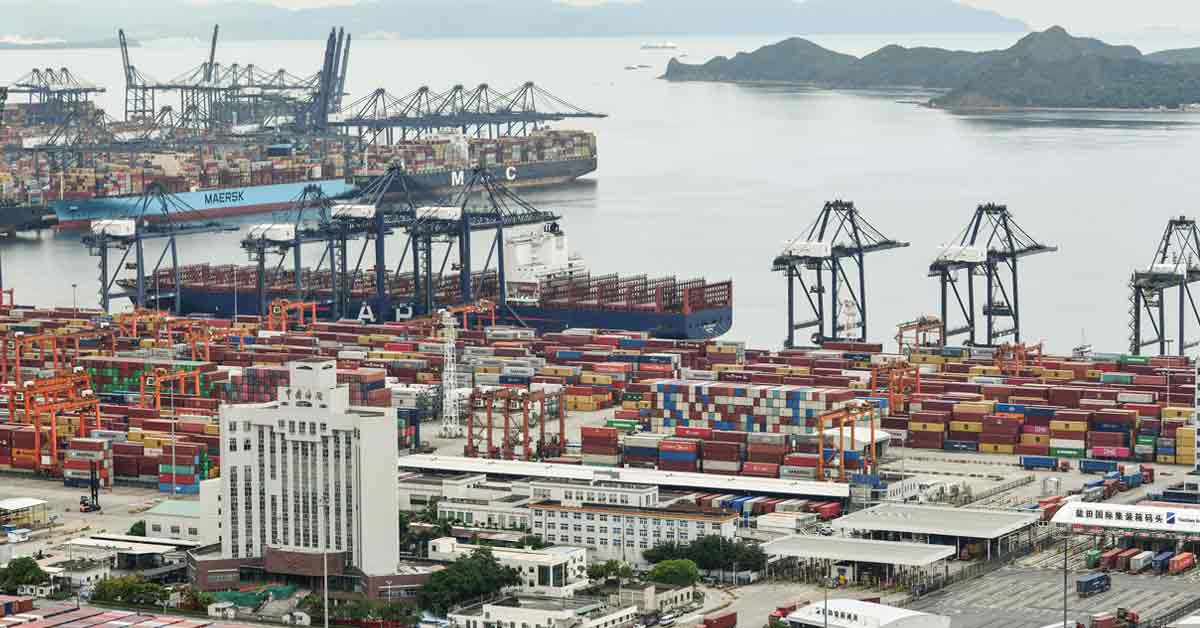War. Inflation. And now, COVID lockdown deja vu in China. It is a perfect storm for the global supply chain – how goods and materials get from other countries to you and me.
When disruptions take place in China, it is significant because about a third of the world's entire manufacturing capacity is based in the country.
If you're buying something online there's a very good chance it was made in Shenzhen – a city of 17.5 million in the south east where roughly half of all China's online retail exporters are based.
So, when Shenzhen went into a six-day lockdown on Sunday after a massive surge in COVID cases, it sent shockwaves through the world's businesses. The restrictions have since widened to other major cities and provinces like Shanghai, Jilin and Guangzhou.
Factories had to suspend production, and cities turned into ghost towns.
The number of ships waiting at some Chinese ports has already increased, according to project44 which monitors how freight is moving across the world. "We saw a 28.5 percent increase in the number of vessels waiting outside of the port of Yantian which is a major export port to Europe and North America," says Adam Compain, senior vice president of project44.
Yantian is the same port which was shut down due to COVID last year, causing major delivery delays over Christmas.
The new measures come at a time when manufacturing output from China was just starting to recover after the Chinese Lunar New Year holidays in February.
While China's COVID measures are drastic, however, at least most lockdowns don't last too long. "It's a double- edged sword," says Steven Lynch, managing director at British Chamber of Commerce China. "China comes down very quickly which causes huge disruptions but then, things will go back to normal relatively quickly."
Companies also seem to be much better prepared this time.
"We've seen these lockdowns before so companies have put in a robust supply chain management," Mr Lynch explains.
For example, e-commerce giant Amazon bought more China-based inventory to buffer any potential disruptions during earlier Omicron surges so it doesn't anticipate a significant disruption from the latest measures.
"We are able to counter these closures by diverting available freight to our neighbouring warehouses in the region," an Amazon spokesperson said.
Another example is Foxconn which makes iPhones for Apple. It has tried to shift production to other manufacturing sites while resuming production by asking employees to work in a closed loop system – or bubble – on its campus where people live and work.
"For Foxconn, it is probably easier," says Dan Wang, chief economist at Hang Seng Bank China.
"But for many of those producers, they have to rely on the shipment of other parts, mostly within the same region so it's really hard to move because the transportation within China can also be disrupted."
Shifting Sands
The situation has put renewed spotlight on China's zero-COVID – or virus elimination – strategy.
On Thursday, President Xi Jinping said the country would stick to its policy but in a meeting of the country's top leaders, he also emphasised that pandemic measures should not cause economic pain.
If China continues with its zero or close-to-zero COVID strategy, it may be China's economy and the global consumers it supplies, who will feel the real pain.
There are signs that it is enacting longer term costs, making some companies re-think their positions in the Chinese market.
Alvin Ea, chief executive of Singapore's largest container haulage platform, Haulio, believes that the industry has become a lot more resilient, by looking at options other than China.
"A lot of the players have already diversified some of their resources and their plans, not to put all their eggs in one basket," he says.
"From a Southeast Asia standpoint, what we could see potentially is that some of the Vietnamese, Malaysian and Indonesian factories could see an increase in orders."
Peter Sand, chief analyst at Xeneta agrees.
"Companies' contingency plans include anything from growing their stocks of inventories to setting up production facilities in neighbouring countries, or potentially the more expensive option to bring some manufacturing back close to where their main customers are," he says.
Michael Hart of the American Chamber of Commerce in China, says a number of its members have been thinking about moving operations, although these are still are very much a minority.
"But of those who've been thinking of moving operations, 22 percent cited COVID-related restriction last year, and that was up from five percent, the previous year."
